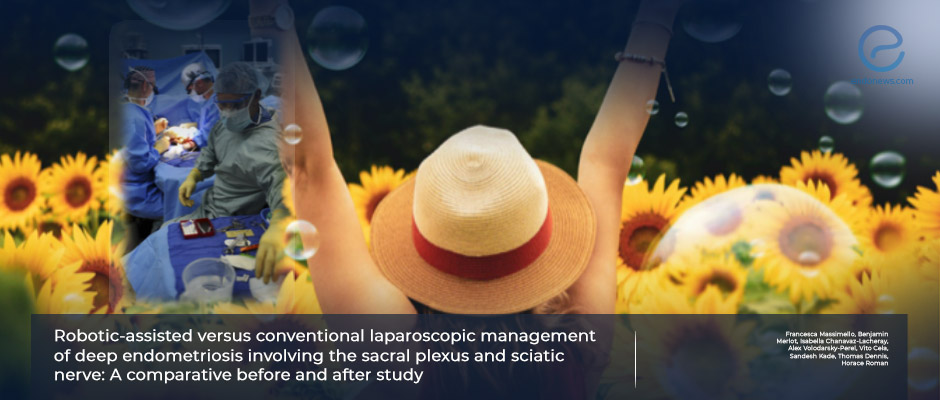Conventional Laparoscopy as Good as Robotic-Assisted Laparoscopy
Aug 20, 2024
There seems to be no difference in outcomes between women with deep infiltrating endometriosis treated with conventional and robotic-assisted laparoscopy.
Key Points
Highlights:
- There seem to be no differences between conventional and robotic-assisted laparoscopy in terms of symptom relief in deep infiltrating endometriosis.
Importance:
- Both approaches could be used to treat women with the disease.
What’s done here:
- Researchers compared the intra- and postoperative outcomes of both approaches in 100 patients with deep infiltrating endometriosis.
Key results:
- Complications occurring during or after surgery were similar between patients who had either conventional or robotic-assisted laparoscopy.
- The operative times were similar between the 2 approaches
Lay Summary
Both conventional laparoscopy and robotic-assisted laparoscopy are associated with significant long-term symptom relief in patients with endometriosis involving the sacral plexus and sciatic nerve, according to a new study published in the International Journal of Gynecology & Obstetrics.
“Although surgeons found that [robotic-assisted laparoscopy] improved the quality of excision of these specific [deep endometriosis] localizations, our study did not reveal significant advantages in terms of its outcomes,” the authors said.
To compare the outcomes during and after surgery of both approaches, the team led by Dr. Horace Roman from Institut Franco-Européen Multidisciplinaire d'Endométriose, in Bordeaux, France retrospectively analyzed 100 patients with deep infiltrating endometriosis (DIE) who underwent surgery between September 2018 and June 2023. Of these 100 patients, 71 had conventional laparoscopy while 29 had robotic-assisted laparoscopy.
The symptoms and distribution of the lesions were similar between the 2 groups of patients.
The majority (77.5%) of patients who underwent conventional laparoscopy had nerve dissection, 19.7% had nerve shaving, and 5.6% had intra-nerve dissection. None of the patients who had robotic-assisted laparoscopy had intra-nerve dissection. Most (82.8%) had nerve dissection and 17.2% had nerve shaving. The mean operative times in conventional laparoscopy was 183.71 ± 85.32 minutes while for robotic-assisted surgery it was 177.41 ± 77.19 minutes. None of the patients had to convert to open surgery. The researchers also reported that complications occurring during or after surgery were similar between the 2 groups. At 6 months follow-up, there was a significant reduction in sciatic pain in all patients, and no differences in outcome were recorded.
Research Source: https://pubmed.ncbi.nlm.nih.gov/38923519/
deep infiltrating endometriosis robotic surgery sciatic endometriosis laparoscopy

